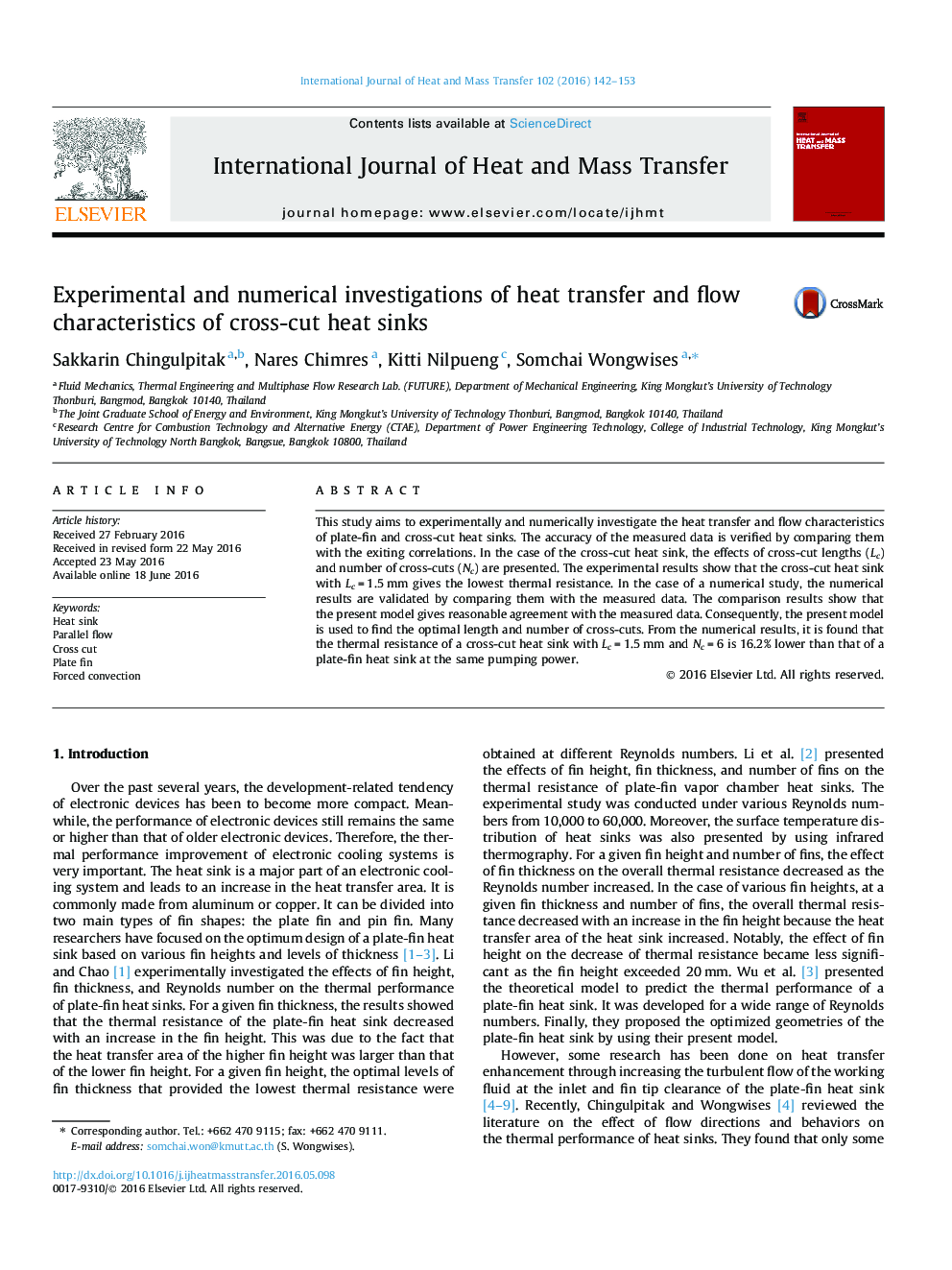| Article ID | Journal | Published Year | Pages | File Type |
|---|---|---|---|---|
| 7055038 | International Journal of Heat and Mass Transfer | 2016 | 12 Pages |
Abstract
This study aims to experimentally and numerically investigate the heat transfer and flow characteristics of plate-fin and cross-cut heat sinks. The accuracy of the measured data is verified by comparing them with the exiting correlations. In the case of the cross-cut heat sink, the effects of cross-cut lengths (Lc) and number of cross-cuts (Nc) are presented. The experimental results show that the cross-cut heat sink with Lc = 1.5 mm gives the lowest thermal resistance. In the case of a numerical study, the numerical results are validated by comparing them with the measured data. The comparison results show that the present model gives reasonable agreement with the measured data. Consequently, the present model is used to find the optimal length and number of cross-cuts. From the numerical results, it is found that the thermal resistance of a cross-cut heat sink with Lc = 1.5 mm and Nc = 6 is 16.2% lower than that of a plate-fin heat sink at the same pumping power.
Related Topics
Physical Sciences and Engineering
Chemical Engineering
Fluid Flow and Transfer Processes
Authors
Sakkarin Chingulpitak, Nares Chimres, Kitti Nilpueng, Somchai Wongwises,
